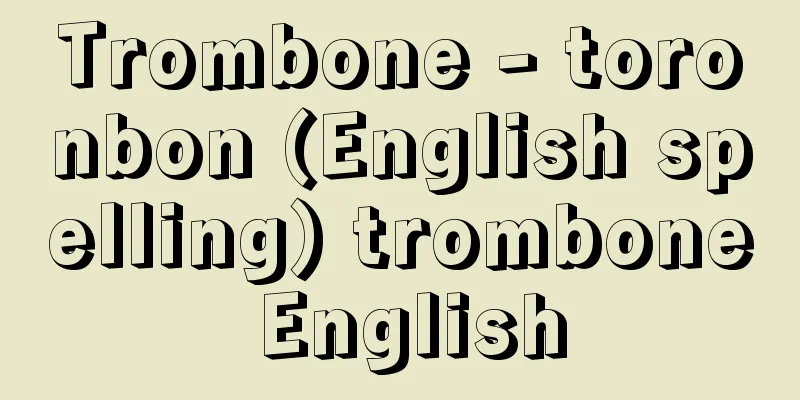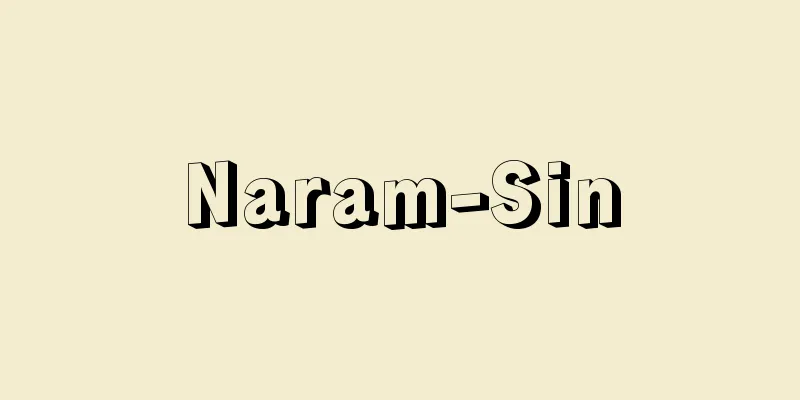Trombone - toronbon (English spelling) trombone English

|
A lip-reed aerophone. It belongs to the so-called brass instruments of Western music, and like the trumpet, the tube is basically cylindrical. The trombone that is commonly used today is the slide trombone, which can change the length of the tube by sliding part of the tube, thereby changing the pitch. Its structure is very simple, and it looks like a single long tube folded twice in the middle, but it actually consists of three tubes and two slide tubes connecting them. The slide tube that comes out in front of the mouthpiece is used to move constantly during playing to obtain the required pitch, and the slide that folds back from the front and is located behind the player's shoulder is used to fine-tune the pitch of the instrument itself. The actual sound is produced by extending the slide from the position where it is pulled all the way forward (first position), and selecting harmonics by adjusting the lips in order to produce sounds up to the seventh position, which is lower by a semitone. This slide tube is a major feature of the trombone, and it allows performances such as portamento that are difficult to perform with other so-called brass instruments. The most commonly used slide type today is the tenor (B♭) type, followed by the tenor bass (usually a B♭, which can be switched to an F by operating the valve), as well as the soprano (B♭) and alto (E♭) types. In addition to the slide type, there is also a type called a valve trombone, which uses valve pistons like a trumpet. It was popular in Germany and Italy in the second half of the 19th century, but is rarely used today because of its poor sound quality. [Ryūji Uta] Bell diameter: 20.4cm ©Yamaha "> Tenor Trombone Bell diameter: 18.18cm ©Yamaha "> Alto Trombone Bell diameter: 20.4cm ©Yamaha "> Valve Trombone Mid-19th century, brass, length 111 cm, owned by the Metropolitan Museum of Art 19th century trombone Source: Shogakukan Encyclopedia Nipponica About Encyclopedia Nipponica Information | Legend |
|
リップリード(唇を発音源とする)の気鳴楽器の一つ。西洋音楽のいわゆる金管楽器に属し、トランペットと同様、管は円筒形を基本としている。現在一般に用いられているのは、管の一部をスライドさせることで管長を変え、それによって音高を変えることができるスライド式トロンボーンである。これは構造的には非常に単純で、外見上は長い1本の管を途中で2回折り返した形をしているが、実際には3本の管とそれをつなぐ2本のスライド管からなっている。スライド管のうち、歌口から奏者の前方に出ているものは、演奏中につねに動かして必要な音高を得るために用いられ、前方から折り返してきて奏者の肩の後方に位置するものは、楽器自体のピッチを微調整するために用いられる。実際の発音は、スライドをいちばん手前に引いた位置(第1ポジション)からスライドを伸ばして、順に半音ずつ低い第7ポジションまでの音を唇の調節による倍音の選択と組み合わせてなされる。このスライド管がトロンボーンの大きな特色で、これによってポルタメントなど他のいわゆる金管楽器には困難な演奏が可能となる。今日もっとも使用されるスライド式はテノール(B♭管)のタイプで、テノール・バス(通常B♭管、弁の操作でF管に切り替え可能)がこれに次ぐ。このほかにもソプラノ(B♭管)、アルト(E♭管)などがある。 このスライド式のほか、トランペットのようにバルブ・ピストンを用いたバルブ・トロンボーンとよばれるものもある。19世紀後半にはドイツ、イタリアなどでよく用いられたが、音質があまりよくないため、今日ではほとんど用いられない。 [卜田隆嗣] ベルの直径20.4cm©ヤマハ"> テナー・トロンボーン ベルの直径18.18cm©ヤマハ"> アルト・トロンボーン ベルの直径20.4cm©ヤマハ"> バルブ・トロンボーン 19世紀中ごろ 真鍮 長さ111cmメトロポリタン美術館所蔵"> 19世紀のトロンボーン 出典 小学館 日本大百科全書(ニッポニカ)日本大百科全書(ニッポニカ)について 情報 | 凡例 |
<<: Trompong (English spelling) [Indonesia]
>>: Trondheim - Trondheim (English spelling)
Recommend
speleology
…Spelunking and potholing are also used rarely as...
Colour excess
The light of a distant star is somewhat reddish du...
Kawara (English name) roof tile
It is one of the most common roofing materials, a...
Itomakinaganishi - Itomakinaganishi
...It is omnivorous and eats organic matter such ...
Climate landscape
A general term for landscapes that directly or ind...
Opinion rating - Opinion rating
...This is a type of sensory level defined as a m...
Mental development
A series of changes in mental functions that occur...
Super lattice
A solid solution in which different types of atoms...
Red currant - Red currant
...A deciduous small fruit tree of the Saxifragac...
Minakuchi [town] - Minakuchi
A former town in Koka County in southern Shiga Pre...
Jeolla-do (English spelling)
The region on the southwestern tip of the Korean P...
Policy for the Creation and Maintenance of Owner-farming Farms
A policy to turn tenant farmers into independent f...
Kameda Heiya
…A plain in Hokkaido that stretches across the no...
Ilahabad (English spelling)
...It is also one of the most important holy plac...
Mechanical fishing
...However, if we categorize and classify the fis...









